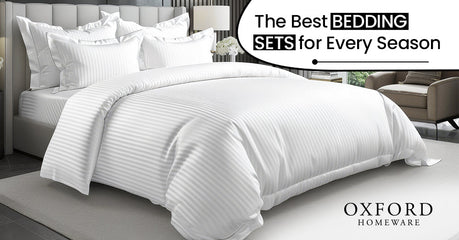How To Choose The Right Fleece Blanket








Fleece Features
Fleece has numerous qualities that make it the perfect fabric for chilly climates. These are the same characteristics that make fleece such a beloved and well-liked fabric.
- Since fleece is a superb insulator, one of its finest properties, it will keep you warmer than other textiles. Although it sometimes receives a waterproofing chemical treatment to boost its water resistance, it naturally repels water.
- Its construction from plastic fibres is one factor in its resistance to water. However, the thick texture of the cloth is another factor. In addition, it dries quickly due to its inherent water-repellent properties. It's perfect for snowy and chilly days when you need athletic gear.
- Fleece has the additional advantages of being machine washable and breathable. If being vegan is essential to you, fleece is vegan since the fabric isn't manufactured from animal hair. In addition, it is less irritating and unpleasant than wool since it is hypoallergenic. It is thus a preferable option for those who are allergic to wool.
- Petroleum or petroleum derivatives are heated until they generate a thick, syrup-like substance that hardens and is spun into threads to create fleece. Fell is created by sewing a light fabric made of tiny polyester fibres and then brushing it out.
15% OFF
GET FLAT 15% OFF ON YOUR FIRST PURCHASE
What Kind Of Material Is Fleece?
One of the most significant artificial materials is a fleece. However, because a human created it, it must be artificial. Polyester fibres, one of the most prevalent and adaptable synthetic materials used for fabric, are utilised to make most forms of fleece.

But not all fleece is comprised solely of artificial substances. Occasionally, natural or recycled fibres are woven with fleece to create different mixes of fleece textiles, each with its own characteristics and textures. A few of these fibres include cotton, hemp, recycled PET plastic, and fibres derived from animals or plants.
Cotton fleece can be made entirely of cotton or a cotton/polyester blend. However, fleece is mainly a synthetic fabric, which makes it a popular material for clothing since it is strong, flexible, and easy to work with.
Also check How Can You Keep Your Fleece Blanket Soft After Washing It.
Advice For Picking The Best Fleece Blanket
Considering Function
Various uses for fleece blankets, depending on the recipient's age. For instance, you should pay more attention to the blanket's softness while buying a baby blanket than when buying a fleece throw for the living room.
The Stuff That Really Matters
The fabric or textile impacts a fleece blanket's texture and price, making it likely the most crucial consideration. Everyone has their own conception of what constitutes a comfortable setting. It boils down to convenience, price, and quality.
- Wool is the best material for warmth, although some get skin irritation.
- Although more costly, cashmere, a fibre from cashmere goats, is very soft.
- Cotton is substantial, allergy-free, and becomes softer with each wash.
- Another excellent choice is fleece, which is warm and cosy to the touch while being less expensive and simpler to clean than wool.
Look for cotton/polyester mixes, which are both soft and cosy and machine washable, to get the most outstanding value for your money.
Pay Heed To The Care Guidelines
Your throw will need frequent cleaning unless it is only ornamental. How important is comfort (or discomfort) to you?
Cotton or polyester materials retain their form and colour when washed in cold water using a moderate cycle. If you are concerned that any ornamental items could be harmed in your washing machine, think about hand cleaning. Because too much heat might cause synthetic fibres to melt, choose a low or no-heat tumble drying option.
To prevent shrinking or fibre damage, think about air-drying your throw if you have a drying rack or a railing. You may also wash mixtures made of wool or polyester.
Because heat and water may shrink or damage the fibres in wool and cashmere, dry cleaning is recommended. When synthetics, particularly fleece, come out of the dryer, watch for static. A comfortable blanket is lovely, but an easy-to-clean blanket is even better.
Fleece blankets are available in multiple colours including Black, Burgundy, Grey, Yellow, Coffee, Navy Blue, Sky Blue, Silver, Pink, Purple, Rust, Camel, Emerald green and Teal.
Varying Fleece Densities
One of their main advantages is that fleece blankets are so warm yet lightweight. Throw fleece blankets come in various styles or weights that may provide varying degrees of warmth. Three significant fleece weights blankets are offered as blankets.
- The thinnest sort of fleece, microfleece, is suitable for use as swaddling or baby blankets.
- A thicker size than microfleece, hundredweight is often used for mattresses.
- Medium Weight: Ideal for blankets that will be used on the ground or grass, extremely robust, and great for adding warmth.
Finding The Correct Blanket Size
Receiving blankets are often an exact 30-inch square. Swaddling blankets are often a little more oversized and measure a square of approximately 42 inches. The standard-size crib quilt, which measures 45 by 60 inches, or a slightly bigger blanket designed to accommodate children's beds are available for purchasers interested in using fleece for cribs or infant beds.

What Purpose Do You Have For Your Blanket?
Are you the kind of person who enjoys curling up under a fleece blanket? Or would you like to curl up on the throw blanket and squirm between the sheets?
Do you want it all to yourself, or do you want to share it with the person in the bed next to you? You may use the answers to these questions to choose the appropriate size fleece blanket for your bed.
There are several easy methods to make your throw last longer and keep it clean. Use a depiller to keep your blankets looking their best since even the finest fleece and flannel are prone to pilling.
When using your throw, be aware of any hand-stitching; blankets might snag on jewellery, toenails, or snaps and zippers. Place your throw blankets in a basket adjacent to your sofa or chair while not in use. Please keep them in a cool, dry area during the warmer months, sealed in a box or bag.



